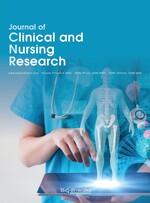Abstract
Aim: Based on the experience of the 5.12 Wenchuan Earthquake and the 8.8 Jiuzhaigou Earthquake, the emergency management strategies for nosocomial infections were compared between the two earthquakes. The experience shared in the present study provides a guideline for the emergency medical rescue of future earthquake. Methods: The patients involved in this study were those injured in the earthquake and admitted to the hospital for treatment. As an earthquake relief center, the hospital participated in the emergency rescue work of the two recent major earthquakes in western China. Review analysis was carried out in the hospital’s infection control experience adopted in the two major earthquakes. It was emphasized that, targeting the characteristics and difficulties in the prevention and control of nosocomial infection, different innovative infection control emergency strategies were adopted by the frontline disaster relief hospitals, under the special circumstances and medical conditions in an earthquake disaster. Results: According to the different focus of infection control in the two earthquakes, different hospital infection control strategies were adopted, and the incidence of nosocomial infections was effectively controlled.
References
Pan WJ, Zhai GF, 2022, The Whole Process of Urban Earthquake Risk Management. Disaster Prevention Expo, 6(4): 101–104.
Rizk A, Abou Fayad A, Haraoui LP, 2023, Antimicrobial-Resistant Infections after Turkey/Syria Earthquakes, 2023. Emerging Infectious Diseases, 29(6): 1273–1275. https://doi.org/10.3201/eid2906.230316
Reina Ortiz M, Le NK, Sharma V, et al., 2017, Post-Earthquake Zika Virus Surge: Disaster and Public Health Threat Amid Climatic Conduciveness. Scientific Reports, 7(1): 15408.
Khan AA, 2020, Emergency Medical Services Providers’ Experiences and Attitudes Toward Infection Prevention and Control Measures in Saudi Arabia: a Qualitative Study. Disaster Medicine and Public Health Preparedness, 14(6): 713–718.
Suneja A, Gakh M, Rutkow L, 2018, Burden and Management of Noncommunicable Diseases After Earthquakes and Tsunamis. Health Security, 16(1): 30–47.
Xie H, Min TU, Dongyun AI, 2008, Prevention and Control Strategies of Nosocomial Infection in Earthquake Wounded Ward. Journal of Nursing Science, 23(18): 18–19.
Anshori F, Kamal AF, Prabowo Y, et al., 2023, The Outcome of Orthopedics Treatment of Lombok Earthquake Victim 2018: A Cohort of One-Year Follow-Up Study-Lesson Learned After Lombok Earthquake. Orthopedic Research and Reviews, 2023(15): 91–103. https://doi.org/10.2147/ORR.S387625
Liu-Yi LI, Ying-Hong WU, Yang XS, 2013, Infection Control in the Early Stage of Treatment of Earthquake Victims. Chinese Journal of Nosocomiology, 23(17): 4225–4227.
Izumikawa K, 2018, Infection Control After and During Natural Disaster. Acute Medicine & Surgery, 6(1): 5–11.
Feng Q, Wang D, Yang W, et al., 2008, Prevention and Control of Nosocomial Infection in Medical Treatment Process After “5.12” Wenchuan Earthquake. Chinese Journal of Infection Control, 7(4): 225–228.
Liu CG, 2021, Prevention and Control of Orthopedic Surgical Incision Site Infection. Chinese Science and Technology Journal Database (full text version) Medicine and Health, 2021(1): 42–45.
